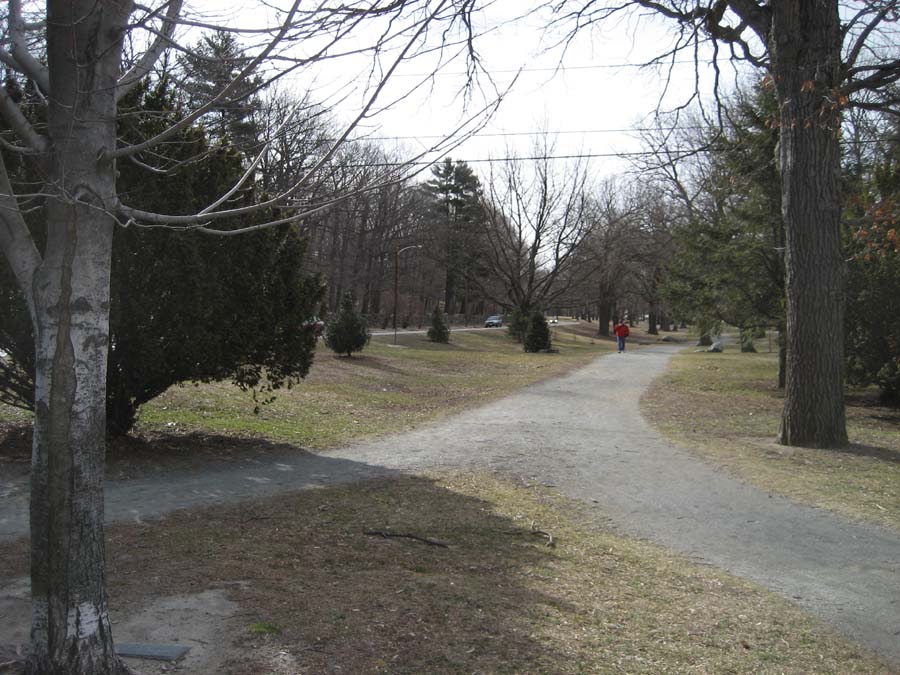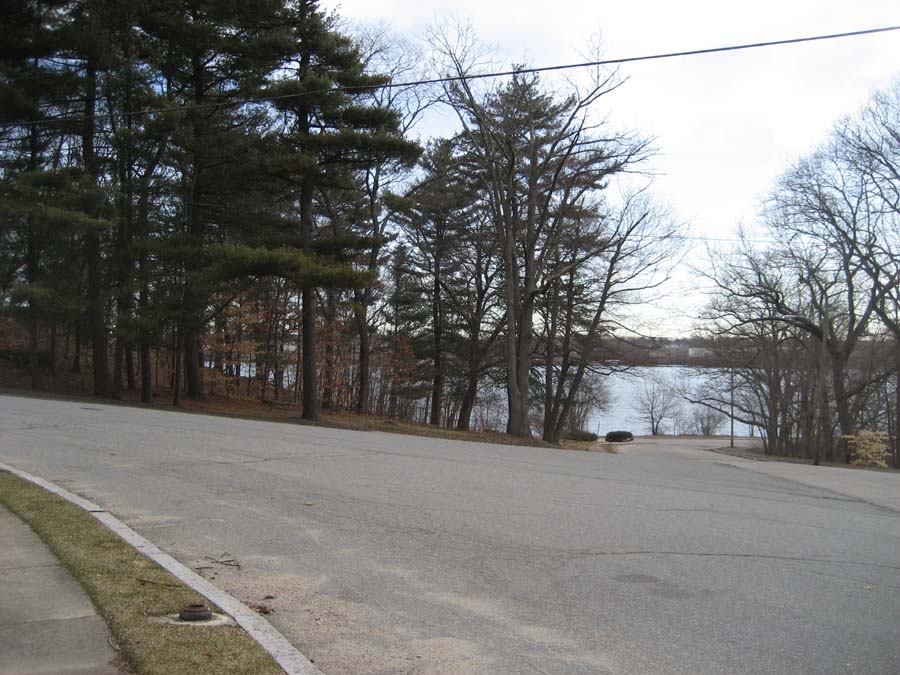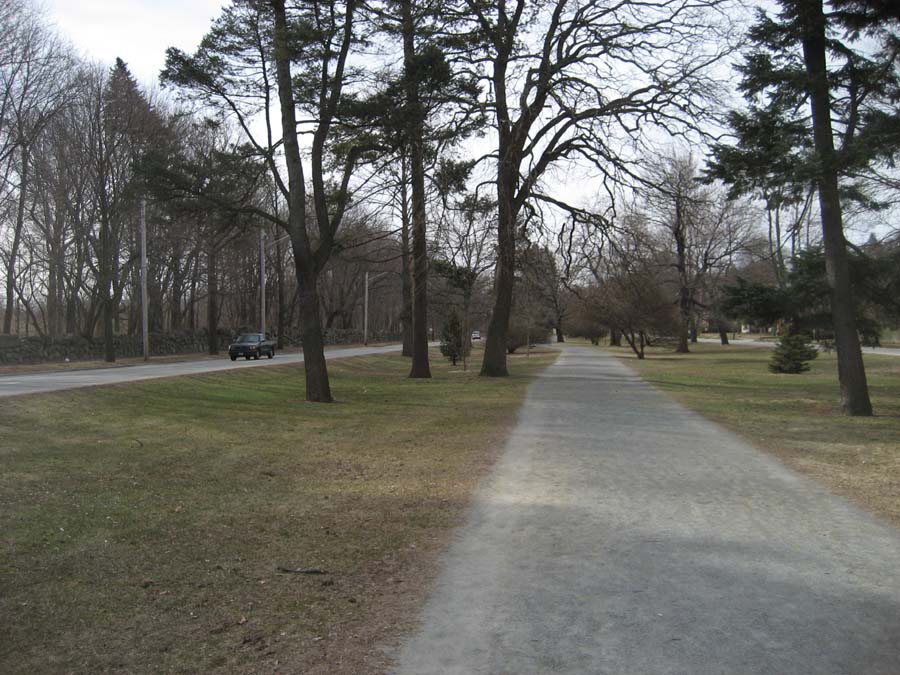The exercise of describing a visit to a local sanctuary filled me with apprehension at first. The word “sanctuary” at once conjures up modern religious implications---a church, a temple, a mosque. I grew up pretty much with no religion, celebrating Hanukah and Christmas as secular holidays , visiting synagogues and churches only for Bat Mitzvahs and weddings of family or friends, or going to the neighborhood church services only four times a year for all-school chapel. I may have attended an Episcopalian school for thirteen years, but our school’s chapel was also the scene of Hanukah services, Kwanza celebrations and Ramadan services. Besides, our school “chapel” was really the school auditorium, the site of such mundane, a religious activities as announcements for meetings, dance performances or lectures. I found myself questioning whether a sanctuary in our modern-day terminology could be anything other than a “religious” space and, if not, would I, as an imposter, go to that church down the road on Sunday? I didn’t even know what time church services were held.
Encouraged by Ian’s use of quotation marks around “sanctuary” and his impetus for us to define sanctuary for ourselves, I realized that a church or a temple, a prototypical “sanctuary” for the religious, would be just another place, another room empty of significance for areligious me. Without the attached implication and affiliation, a church is just an example of an ancient genre of architecture called a basilica—a place for all kinds of public meetings much like my school auditorium; I would need to look beyond those types of spaces for my own sanctuary. I began to reflect upon how I would define a sanctuary: a place or area where I feel at peace, a place where I can be alone and with my thoughts even if surrounded by other people, the interior of my sanctuary not affected by the world outside, a place that comforts me if I feel upset or disturbed, a place that fosters euphoria, physical and emotional. And I found the answer to my search, my personal sanctuary: the 5.5 mile loop of Blackstone Boulevard and the stretch of River Road along the Seekonk River. Like most commonly thought of sanctuaries--- enclosed, defined spaces---my running loop too, while not within the confines of a building, was nevertheless closed off by its circular nature.
The forty-five minutes of my run every morning is time set apart from the rest of the day. No matter what the weather or temperature, in ninety degree heat or blizzarding snow, no external circumstances keep me from my run. For me, the time spent on my loop is like therapy: it is a time when I am alone with my thoughts, my worries, my concerns; it is a time when I am not stressed about work or school; it is a daily time reserved for myself and my happiness. Generally speaking, I run alone---a contemplative solitude which makes my experience and interaction with the loop, with my sanctuary, much more pronounced and introverted. I am free to talk to myself out loud, express frustration, happiness or problems audibly, the only listener the dirt path of Blackstone Boulevard or the fallen leaves lining the road along the river. Only on this route, only on this path, do I feel complete openness, unfaltering comfort; I confess my secrets to the breeze.
I have begun to recognize familiar faces, frequent visitors, memorable dogs. Do these people have the same relationship with this space as I do? Are we all members of the same “sacred” fellowship? Or would only I label it a sanctuary because of its significance to me? Do the dog walkers similarly frequent this path as a source of comfort, a location of peace? Or would they view the path as a landscape associated with the daily chore of walking their dog? Would their dislike of my sanctuary defile its sanctity in some way? Or, as we have discussed often in class, is sacredness and sanctity individual? Rarely do I see people following along the same loop as I take, the same starting point and ending point necessarily varies. Is it my own personal sanctuary? I’d like to think so.
The loop itself guides me along, hindering me by puddles, aiding me by its slopping hills. I am a part of its ritual use; I am a traveler on its worn-down path. From the summer blooming, to the oranges and reds of the fall, to the pines of the winter, my loop may visually change, but it still holds the same significance and pleasure. My daily run is a routine, but in this case, because of its association with the loop, some form of personalized sacred space, my daily run also becomes a ritual. I am its initiate: I wear dedicated running clothing, crowned by a headband signifying my special votive status and I wear meticulously crafted, high-tech distinct shoes.
Not only does the loop from Blackstone around to the river and back provide a space of comfort, peace, silence and escape, but it inspires and even evokes a certain euphoria. The so-called “runner’s euphoria” that kicks in during my runs is site specific---directly linked to placement along the loop. Like any frequent visitor to any site, one may know exactly what to expect. Nonetheless, each time I pass that specific tree, that specific crosswalk, that specific bench, I am shocked by the sudden burst of euphoria, by that last bump of energy needed to get me back up the hill. It is as if that section of the loop senses my presence, responds to my pounding footsteps, releasing the runner’s joy that accelerates the last mile and a half of my run.
Perhaps my running loop, my sanctuary, while not a normally accepted “sacred space,” is as close to a “religious” (in the modern-day sense of the word) sanctuary as I can get. I realize now that if I had found a conventional sanctuary and written about it for this project, if I had gone to a church on Sunday for example, I would merely be pretending, forcing myself into an empathy with something that would be really alien to my experience. My sanctuary is sacred to me in its own way: it is a place where I express in a daily ritual action what I feel strongly about, what I believe in.



Posted at Mar 17/2008 11:52PM:
Heidi: Never forget who initiated you into these mysteries! I struggled with the same allergy to the notion of sanctuaries being exclusively religious spaces and agree that the modern sense of the term has a much more disembodied resonance. I would also point out that the actions -- a ritual repeated daily, regardless of circumstances, with little variation -- and objectives -- clarity, release, etc. -- that define your sanctuary might gesture toward more useful ways of thinking about ancient sanctuaries as well.
Posted at Mar 18/2008 09:25AM:
Elisa: I really like your observation that sanctuary can be deeply personal and relational. The space used to incite a sense of fear, but now, it is the things that fill this space that make you recognize its sacral qualities. I feel as though our definition of sanctuary in all of these responses relates not to the question of religion, but of security, of comfort, and most of all, of memory.
Posted at Mar 18/2008 09:54AM:
Keffie: Your piece implies issues of movement, action, and pace. This is clearly a consideration for all of the "sanctuaries" that we wrote about, but I think is particularly well articulated here. Your experience of your sacred space is at a sub-8 minute mile (rockstar!) while that would hardly be appropriate for Heidi visiting the RISD musuem. You are engaged bodily with the space in a particular way. This leads me to thinking about the proper bodily comportment in particular "sanctuaries" and how this frames our experience of them.
